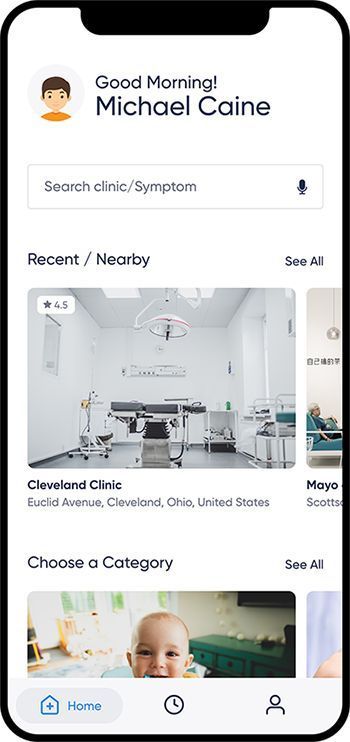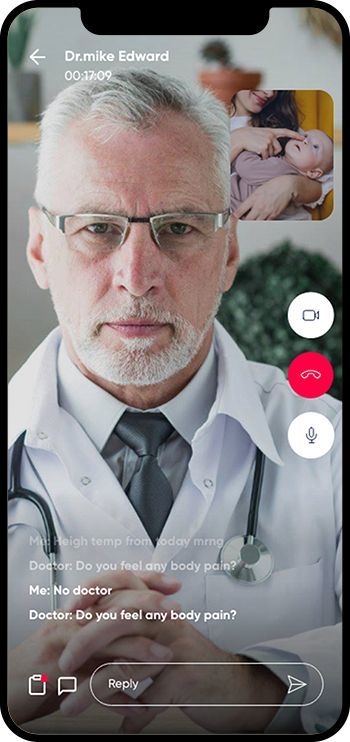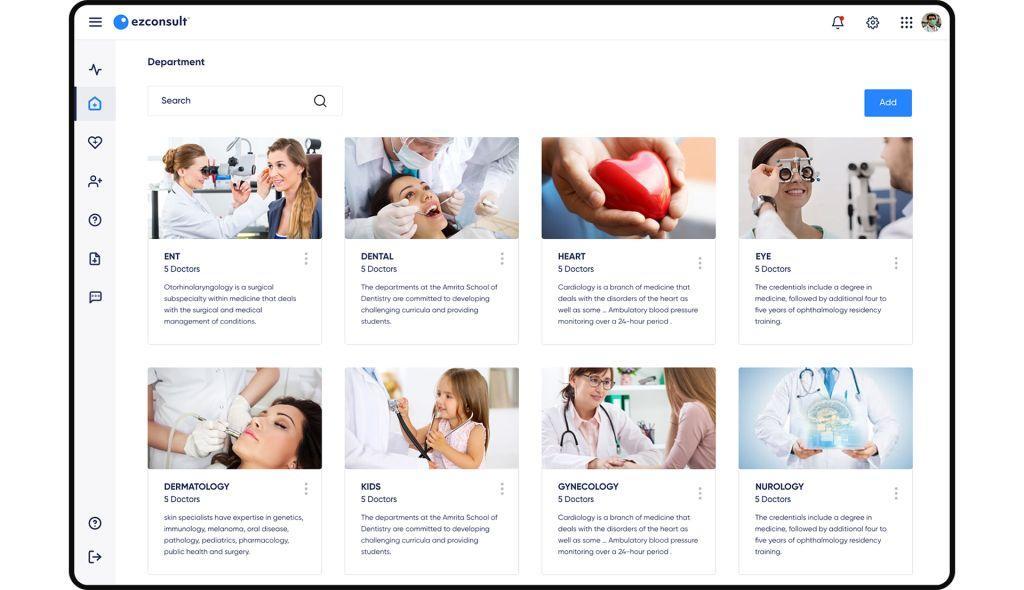Healthcare is a massive industry, and a lot of people are involved in it in several different capacities. Patients and caregivers have begun to use healthcare apps and technologies especially in USA and Canada that would speed up healthcare services in a much more proper and streamlined manner. There has been a call to provide patient engagement tools with quality standards, precision, and pricing that would provide the correct diagnosis. Both healthcare providers and patients have their own concerns while using tools, but the priority is always patient engagement.
Patient engagement refers to a patient’s association with their healthcare provider where they are informed about the possible treatment, recuperation, and medication options that are relevant to their medical care to help with positive outcomes. When patients are actively engaged in their own healthcare, it would be time-saving, both for the medical professional and for the patient. The patient can avoid frequent visits to the hospital, and they are empowered to actively participate in decision making. It actually works towards every provider's mission of providing the best outcomes possible for the patient in a cost-effective manner, in the comfort of their homes, with all the privacy patients need.
Advancements in technology have made lives incredibly simpler for everyone and this has played an enormously positive role in several industries, including healthcare and all the people associated with this industry - medical service suppliers, health plan creators, healthcare providers, and so on. The patients are enjoying the advancements in healthcare because thanks to engagement tools, life has become simpler for them.
Healthcare providers and patients have access to various patient engagement solutions especially in the USA and Canada with the help of smart devices, IoT, and therapeutic wearable gadgets. These applications have become major assets that would help connect providers and patients, aiding healthcare providers in creating solutions that patients would definitely adopt.
Every person has the goal of remaining healthy, and while clinical care helps people achieve that goal to an extent through cutting edge procedures and new age therapeutic solutions, there is something that can help achieve better outcomes in a much faster way. This is possible when people are actively engaged in their own care, and take independent actions to manage their health.
When patients become proactive in preventative care, they can actually reduce long term consequences, and the chances of developing chronic illnesses are mitigated. It’s a more cost-effective move too. While targeting prevention and wellness at home, patients can check their health through tools and mobile devices. This is also known as patient activation, a precursor to patient engagement, and it emphasizes the patient’s willingness and interest in taking independent actions regarding their health and care.
Nevertheless, the current scenario proves that people are getting interested in managing their health, and have realized their role in it. They realize the importance of having the knowledge and confidence to manage their own health. With smart devices and mobile apps, patients can monitor their health and have the data sent across to healthcare providers. Hence, security is a crucial step in this process as people are trusting their personal data to be shared across different platforms.
The healthcare industry is going to see many people, including senior citizens who were thought of as technophobic, start using health monitoring devices through remote patient monitoring technologies. In the middle of the COVID 19 pandemic, these monitoring devices are going to take the concept of remote monitoring several notches higher. With remote monitoring through the gamut of wearable monitors, the health data of the patients are collected and then transmitted to the providers, who would facilitate the right choice for treatment and wellness.
We earlier explained that patient engagement is a term that includes patient activation, so now we will look at the different steps in which we can improve patient engagement.

The first major step inpatient care is finding the right health care provider. This is where the search for quality care begins. Patients prefer to have their doctor and hospital be a part of their health plan network because choosing the right doctor is a major point in healthcare. This is followed by other preferences like the perfect location, online visitation fees, reputation, and behavior of the doctor. Online scheduling, accessing labs, and test results are other major factors while searching for care.
The patient’s access to technologies allows for efficient health monitoring and sharing the information to facilitate personalized care, especially for people with chronic health conditions. The number of users tracking their health data has increased considerably and several of them are willing to share their data to monitor their health conditions or to improve the performance of their devices. For example, users are willing to prick their fingers for an at-home blood test to check for cholesterol, blood glucose level, inflammation, triglycerides, etc. by connecting with an app that monitors these parameters.
When organizations provide easy-to-access platforms and high-quality care through new channels they can increase consumer engagement. The new channels of care could be at-home testing, digital diagnostic tools, etc. As the number of digital tools and apps is increasing at a considerable rate, developers have the challenge of developing more evolved and sophisticated tools. These tools should be able to come up with faster diagnosis, 24/7 access to health coaching (diet and nutrition, exercise, sleep, stress management, etc.), and analyze lifestyle changes that could be helpful to chart a new treatment plan.
The fear of sharing health data is slowly getting replaced by willingness. People are ready to share their health data with their personal doctors through online means to improve their health. This helps both the patient and the doctor to be proactive in health management.
While building a patient engagement patient solution, it is important to assist patients in dealing with their data and information through the application. Most of them wouldn’t know how to use these applications optimally, especially the millennials, so there should be a continuum of care that helps in building brand loyalty.
Innovations happen all time. While creating responsive solutions made possible through innovations, they must focus on the well-being of the patients and users, depending on what a particular patient needs and how they should be addressed. High patient engagement means a higher level of patient wellness. Let’s look at different ways in which this can be done.
Patients should be aware of the role they play in health management. Patient outcomes can improve only when they themselves play a prominent role in their healthcare. They are the co-creators and co-managers of their own health, and the apps should be designed in such a way that they are motivated to participate and share their feeling if they want to; thereby ensuring a good experience. One of the ways to do this would be to have doctors that can answer any questions the patient might have in an easy to comprehend manner.
It is important to know what today’s health consumer really wants because healthcare consumerism is becoming a trendy thing. The idea is to create an experience that puts the patient’s needs first, and that means not just emergency care, but secondary services as well. There has to be a shift to focus on what the patient wants. For example, a person with intense back pain must be scheduled for an appointment with a spine specialist within a 24-hour window.
Apart from developing innovative healthcare solutions, it is important to have a customer-friendly process, wherein the treatment and other related processes go smoothly. The patient doesn’t have to wait in line for long to get treatment.

For example, having an intelligent chatbot can reduce the process of waiting, and thereby improve the accuracy of symptoms collection. If there are any areas where healthcare should be improved upon, that must be done quickly as well.
Technology enhancements need to be made to improve patient engagement throughout the process. This can be done by leveraging the best of technology to improve patient engagement. Involve the patient first and the technology at their disposal to give the patient the best care possible. Here are some ways in which you can leverage technology to provide the best care to your patients:

It is possible to increase consumer engagement by providing users with easy to use platforms, new and better tools, and secure their privacy and confidential data. The software developers can focus on providing tools by targeting the different segments, not just by their age, but by health conditions as well. The trend will be to adopt more technologies that would facilitate the user’s information going through all the proper channels and integrating it with the provider’s EHR systems and workflows.
Presently, there are healthcare apps in the market that are bridging the gap between patients and healthcare professionals. And the niche of modern applications is as diverse as never before. There is also a nice bunch of portable assistants who would help users in unprecedented situations or guide them to manage their symptoms.
In the current scenario, app privacy is a major concern because people are worried about the apps misusing their data by hacking into their personal information. So many apps are currently incorporating security measures that would prevent attacks and hacks, but this needs to be improved. The pulse of mobile healthcare services lies in the transparency between healthcare providers and patients. There is a good level of patient engagement and apps are collecting information and vital data.
It is important for these healthcare apps to include features that would gain prominence in the coming years. Here are some of them:
The app should provide impeccable virtual care, focus on health, be adaptive to needs and changes, innovation, and customization. Patients who are more engaged in their healthcare will remain eager to fulfill that role. So more virtual care must be provided to users because both people with short term and long term conditions will benefit through positive health behaviors.
In the current scenario, patients will need more virtual care from health and wellness advisors, virtual care visits (from traditional care providers rather than from medical startups and retail brands), routine appointments, and remote patient monitoring. So there must be an integration of well-curated service options with more traditional lines of care through better patient-provider relationships.
Technology must be developed creatively so it can meet the changing needs of the users, be adaptive to their requirements with focus on health and full-on customization. The healthcare industry is dynamic and changing, so patient engagement solutions will also keep changing.
To enjoy the best of healthcare, patients must be able to operate the app in the language they are comfortable in. When they open the app and access it through their native language, they will not have the phobia of using a foreign device and will be happy to make use of all the features provided therein. And cloud management is another feature the apps should possess - invoices, tests, appointments, previous medical history and other info to be accessed from anywhere.
Getting in touch with the doctors through in-app features can help the users consult their medical practitioners who are several miles away. Even in case of emergency, doctors can provide remote medical assistance by noting the symptoms and identify the disease instantly. The doctor can also access the patient’s previous medical history, and if needed, the doctor can suggest the nearest hospital for medical emergencies.
With that in mind, let’s look at the latest trends in patient engagement solutions:
Powerful patient engagement tools with AI, IoT, and chatbots are required to provide highly personalized medical advice. Monitoring micro-processes like hospital bed availability, patient discharge, etc. can be improved with the help of IoT technology. Technology to smoothen patient journeys and facilitate more engagement will be the newest trend.
There are new connected health solutions that allow medical professionals to effectively communicate with the users, treat them, and create new channels of patient engagement so they become informed about their healthcare, and through that, provide better patient health outcomes.
Another way to make people more aware and active about their own health is through RPM or Remote Patient Management. There are a few ways to do that:
The upward trend of educating both the patient and the caregivers will help the providers intervene in patients before minor issues become critical.
Another trend would be interoperability. This helps in providing a continuum of care through a patient-first scenario. However, there is still room for improvement because healthcare has to lean on emerging technologies to boost interoperability. Proper interoperability can boost patient wellness and the provider’s capabilities.
Making use of the surges in artificial intelligence, empowering patients with health data, and bolstering health information exchanges can really make a difference in interoperability. Using medical gadgets and instruments consistently in a sensible and intelligent manner would definitely help improve patient engagement.
What to look forward to in patient engagement solutions
There are a few ways in which the patient engagement solutions can be improved upon, and that is done by touching upon the two main key players in the plan - the provider and the patients.
Provider – Healthcare providers must have the technology to meet the high expectations of today’s patients. According to Accenture, there is a rift between patient expectations and technology offerings. Though the number of patients using smartphones, tablets apps, and wearables to manage their health has increased, the engagement numbers aren’t growing much. The problem area is trust - trust in the confidentiality of patient data, and how safe and private they will remain.
Patients – Provide patients with the kind of tools they are familiar with. Improve upon the tools that are already in the market, making it easy for them to get the best of what the providers offer. Artificial Intelligence can be applied to create innovative applications that improve patient engagement. The providers gain granular insights into the health of the users, receive recommendations on the best action, provide advice and guidance throughout their healthcare journey.
In today’s digital world, patients have the right to control their health, and they have the right to access and control their health information (through smartphones and wearables).
Patient engagement technology where patients and their caregivers work inclusively in their self-care by having a proper understanding of their health conditions allows them to make informed health-care decisions. Connected healthcare with innovative technologies will be the future of healthcare, and the focus must be on innovative ways to connect with patients beyond the walls of the clinic/hospital.
Patient engagement technology is growing incredibly well and is highly influencing the healthcare sector, making it beneficial for all - for the providers through return in investment and reduced reimbursement packages, and for the patients through better care, quality treatment, and improved quality of life.
Patient Engagement Technology will dominate health IT for a long, long time. The success lies when you are able to find the right balance between increased access to care and easy-to-manage healthcare costs. And technology can help there. To know more about how you can create engaging patient engagement solutions for hospitals, contact Cabot Technology Solutions, today!

YOU WILL BE HEARING FROM US SOON!
We look forward to hearing from you!

YOU WILL BE HEARING FROM US SOON!